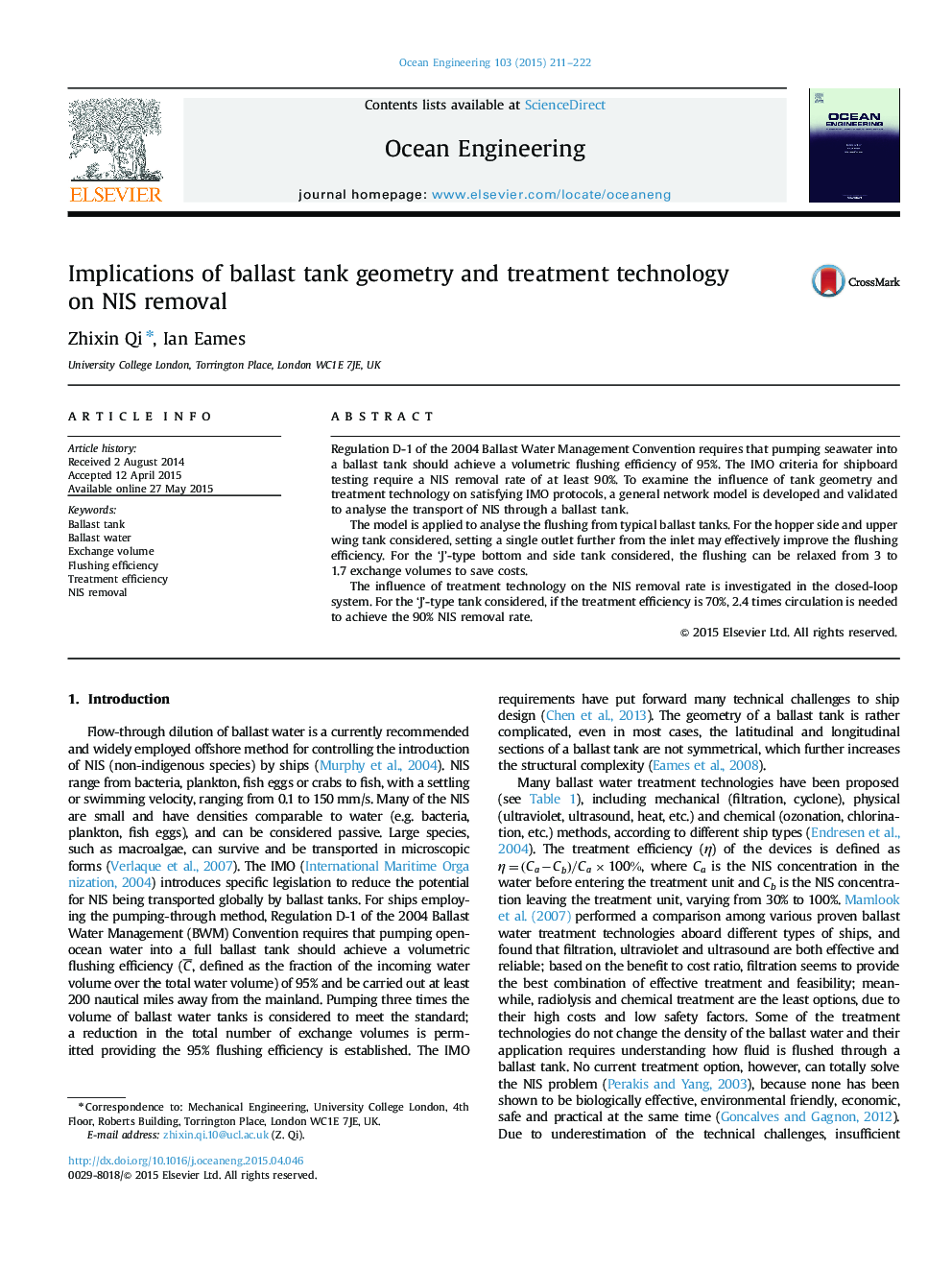| کد مقاله | کد نشریه | سال انتشار | مقاله انگلیسی | نسخه تمام متن |
|---|---|---|---|---|
| 1725453 | 1520687 | 2015 | 12 صفحه PDF | دانلود رایگان |

• A network model for the NIS transport in a ballast tank is developed and validated.
• Setting a single outlet far from the inlet may improve the flushing efficiency.
• For the ‘J’-type tank considered, the exchange volumes can be relaxed to save costs.
• At a treatment efficiency of 70%, 2.4 times circulation can remove 90% of the NIS.
Regulation D-1 of the 2004 Ballast Water Management Convention requires that pumping seawater into a ballast tank should achieve a volumetric flushing efficiency of 95%. The IMO criteria for shipboard testing require a NIS removal rate of at least 90%. To examine the influence of tank geometry and treatment technology on satisfying IMO protocols, a general network model is developed and validated to analyse the transport of NIS through a ballast tank.The model is applied to analyse the flushing from typical ballast tanks. For the hopper side and upper wing tank considered, setting a single outlet further from the inlet may effectively improve the flushing efficiency. For the ‘J’-type bottom and side tank considered, the flushing can be relaxed from 3 to 1.7 exchange volumes to save costs.The influence of treatment technology on the NIS removal rate is investigated in the closed-loop system. For the ‘J’-type tank considered, if the treatment efficiency is 70%, 2.4 times circulation is needed to achieve the 90% NIS removal rate.
Journal: Ocean Engineering - Volume 103, 15 July 2015, Pages 211–222